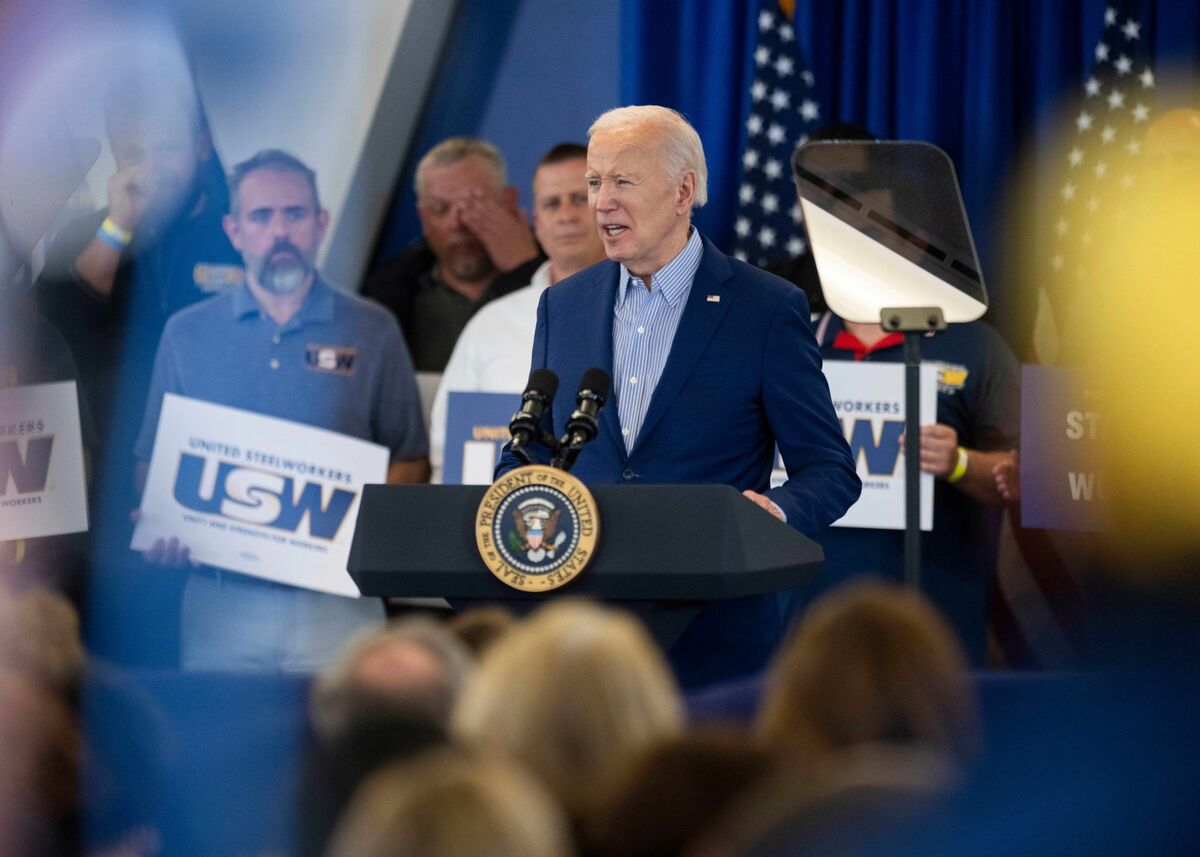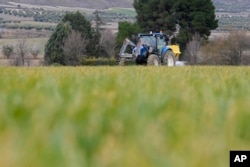Economy
A Year Later, War in Ukraine Still Affects World Economy
|
|
One year after Russia invaded Ukraine, the worldwide economy is still feeling the effects.
There are fewer supplies of grain, fertilizer and energy. There is also higher inflation and more economic uncertainty.
But as bad as the war’s impact has been, it could have been worse. Companies and countries in the developed world have been able to survive the difficulties. In developing economies, however, the pain has been worse.
In the United States and other wealthy countries, there has been a rise in consumer prices, caused in part by the war’s effect on oil prices. But the price increase has eased. It has raised hopes that the U.S. Federal Reserve will not raise interest rates in the world’s largest economy. Higher interest rates could lead to a recession.
China also dropped its severe zero-COVID restrictions late last year. The restrictions had slowed growth in the second-largest economy.
Some good luck has helped, too. A warm winter has helped lower natural gas prices and limit the damage from an energy crisis, after Russia largely cut off gas to Europe.
But in ways big and small, the war is causing pain. In Europe, for example, natural gas prices are still three times higher than they were before Russia began its invasion.
High food prices are especially difficult for the poor. The war has affected wheat, barley and cooking oil exports from Ukraine and Russia. The two countries are major suppliers for Africa, the Middle East and parts of Asia where many struggle with hunger. Russia was also the top supplier of fertilizer.
In Nigeria, a top importer of Russian wheat, average food prices increased 37 percent last year. Bread prices have doubled in some places because of wheat shortages.
“People have huge decisions to make,” said Alexander Verhes. He runs Life Flour Mill Limited in Nigeria’s southern Delta state. He added, “What food do they buy? Do they spend it on food? Schooling? Medication?”
At least 40 percent of bread bakeries in the Nigerian capital of Abuja shut down after the price of flour jumped about 200 percent.
In Spain, the government is spending 300 million euros to help farmers buy fertilizer. The price of fertilizer has doubled since Russia’s war in Ukraine.
“Fertilizer is vital because the land needs food,’’ said Jose Sanchez. He is a farmer in the village of Anchuelo, east of Madrid.
It all means a slowing world economy. The International Monetary Fund (IMF) dropped growth expectations this year.
The IMF says prices increased 7.3 percent in the wealthiest countries last year. That was above its January 2022 prediction of 3.9 percent. Prices increased 9.9 percent in poorer countries, up from 5.9 percent expected pre-invasion.
In Indonesia’s capital, Jakarta, many street food sellers know they cannot make people pay more money. So some are giving smaller portions instead, in a practice known as “shrinkflation.’’
“One kilogram of rice was for eight portions … but now we made it 10 portions,” said Mukroni who runs a food stand. People, he said, “will not come to the shop” if prices are too high.
“We hope for peace,” he said, “because, after all, no one will win or lose, because everyone will be a victim.’’
I’m Dan Novak.
Dan Novak adapted this story for VOA Learning English based on reporting by The Associated Press.
_____________________________________________________________________
Words in This Story
fertilizer — n. a substance that is added to soil to help the growth of plants
consumer — n. a person who buys goods and services
interest — n. the money paid by a borrower for the use of borrowed money
bakery — n. a place where bread, cakes, cookies, and other baked foods are made or sold
vital — adj. extremely important
portion — n. the amount of food that is served to a person at one time





Economy
Biden's Hot Economy Stokes Currency Fears for the Rest of World – Bloomberg


As Joe Biden this week hailed America’s booming economy as the strongest in the world during a reelection campaign tour of battleground-state Pennsylvania, global finance chiefs convening in Washington had a different message: cool it.
The push-back from central bank governors and finance ministers gathering for the International Monetary Fund-World Bank spring meetings highlight how the sting from a surging US economy — manifested through high interest rates and a strong dollar — is ricocheting around the world by forcing other currencies lower and complicating plans to bring down borrowing costs.
Economy
Opinion: Higher capital gains taxes won't work as claimed, but will harm the economy – The Globe and Mail
Canada’s Prime Minister Justin Trudeau and Finance Minister Chrystia Freeland hold the 2024-25 budget, on Parliament Hill in Ottawa, on April 16.Patrick Doyle/Reuters
Alex Whalen and Jake Fuss are analysts at the Fraser Institute.
Amid a federal budget riddled with red ink and tax hikes, the Trudeau government has increased capital gains taxes. The move will be disastrous for Canada’s growth prospects and its already-lagging investment climate, and to make matters worse, research suggests it won’t work as planned.
Currently, individuals and businesses who sell a capital asset in Canada incur capital gains taxes at a 50-per-cent inclusion rate, which means that 50 per cent of the gain in the asset’s value is subject to taxation at the individual or business’s marginal tax rate. The Trudeau government is raising this inclusion rate to 66.6 per cent for all businesses, trusts and individuals with capital gains over $250,000.
The problems with hiking capital gains taxes are numerous.
First, capital gains are taxed on a “realization” basis, which means the investor does not incur capital gains taxes until the asset is sold. According to empirical evidence, this creates a “lock-in” effect where investors have an incentive to keep their capital invested in a particular asset when they might otherwise sell.
For example, investors may delay selling capital assets because they anticipate a change in government and a reversal back to the previous inclusion rate. This means the Trudeau government is likely overestimating the potential revenue gains from its capital gains tax hike, given that individual investors will adjust the timing of their asset sales in response to the tax hike.
Second, the lock-in effect creates a drag on economic growth as it incentivizes investors to hold off selling their assets when they otherwise might, preventing capital from being deployed to its most productive use and therefore reducing growth.
Budget’s capital gains tax changes divide the small business community
And Canada’s growth prospects and investment climate have both been in decline. Canada currently faces the lowest growth prospects among all OECD countries in terms of GDP per person. Further, between 2014 and 2021, business investment (adjusted for inflation) in Canada declined by $43.7-billion. Hiking taxes on capital will make both pressing issues worse.
Contrary to the government’s framing – that this move only affects the wealthy – lagging business investment and slow growth affect all Canadians through lower incomes and living standards. Capital taxes are among the most economically damaging forms of taxation precisely because they reduce the incentive to innovate and invest. And while taxes on capital gains do raise revenue, the economic costs exceed the amount of tax collected.
Previous governments in Canada understood these facts. In the 2000 federal budget, then-finance minister Paul Martin said a “key factor contributing to the difficulty of raising capital by new startups is the fact that individuals who sell existing investments and reinvest in others must pay tax on any realized capital gains,” an explicit acknowledgment of the lock-in effect and costs of capital gains taxes. Further, that Liberal government reduced the capital gains inclusion rate, acknowledging the importance of a strong investment climate.
At a time when Canada badly needs to improve the incentives to invest, the Trudeau government’s 2024 budget has introduced a damaging tax hike. In delivering the budget, Finance Minister Chrystia Freeland said “Canada, a growing country, needs to make investments in our country and in Canadians right now.” Individuals and businesses across the country likely agree on the importance of investment. Hiking capital gains taxes will achieve the exact opposite effect.
Economy
Nigeria's Economy, Once Africa's Biggest, Slips to Fourth Place – Bloomberg


Nigeria’s economy, which ranked as Africa’s largest in 2022, is set to slip to fourth place this year and Egypt, which held the top position in 2023, is projected to fall to second behind South Africa after a series of currency devaluations, International Monetary Fund forecasts show.
The IMF’s World Economic Outlook estimates Nigeria’s gross domestic product at $253 billion based on current prices this year, lagging energy-rich Algeria at $267 billion, Egypt at $348 billion and South Africa at $373 billion.
-
Media5 hours ago
DJT Stock Rises. Trump Media CEO Alleges Potential Market Manipulation. – Barron's
-
Business24 hours ago
BC short-term rental rules take effect May 1 – CityNews Vancouver
-
Media7 hours ago
Trump Media alerts Nasdaq to potential market manipulation from 'naked' short selling of DJT stock – CNBC
-
Art23 hours ago
Collection of First Nations art stolen from Gordon Head home – Times Colonist
-



 Investment24 hours ago
Investment24 hours agoBenjamin Bergen: Why would anyone invest in Canada now? – National Post
-
Media20 hours ago
DJT Stock Jumps. The Truth Social Owner Is Showing Stockholders How to Block Short Sellers. – Barron's
-
Investment6 hours ago
Private equity gears up for potential National Football League investments – Financial Times
-



 Health20 hours ago
Health20 hours agoType 2 diabetes is not one-size-fits-all: Subtypes affect complications and treatment options – The Conversation




